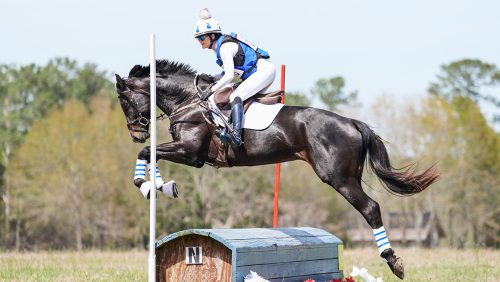A huge victory on the farm this weekend: My wonderful assistant trainer, Allison, passed both her Pony Club Dressage B and A exams, all in one go, proving that she is both a) crazy and b) super awesome. I knew both of these things already, but now the Pony Club – and everyone else – does too. I’m SO proud of her, and have been shouting her achievement from the rooftops.
The Pony Club ratings are one very impressive system for evaluating future professional horseman, but not the only one. My experience with them is fairly limited – more on that later – but I’ll explain what I know about them.
Since we’re talking Pony Club, that’s where we’ll start. PC has a rating system that begins at D1, then D2, D3, C1, C2, C3, B and A. At the C3, riders now can pick a discipline – Show Jumping, Dressage, or Traditional (eventing) and specialize. There are also the H-B and H-A, which judge experience in Horse Management. Every level requires extensive knowledge on all aspects of horse riding, care and training – riding, teaching, lunging, grooming, veterinary care, nutrition, the works, all with a sense of self-sufficiency, even amongst the youngest and lowest-rated riders.
These are some tough tests. Allison came to me with her H-A, but I had a friend in college studying for her H-B, and I believe she had to know about 32 ways to wrap a hock as part of the test. They’re practically veterinarians by the time they pass the H-A.
I don’t know what the show jumping ratings entail, but I know that the riding portion of the Traditional B (which Allison also holds – overachiever!) is about training level eventing; the A is about prelim. For the Dressage B, it’s Second level, test 3; for the A, it’s Third-3. And that’s just part of the riding portion. Allison also had to bring a green horse. She had to switch horses with the other participants in the program. She had to work without stirrups, work over cavaletti, and mostly be able to talk.
The Pony Club ratings are more about knowledge than about riding, really. Allison had to talk about each horse, what their strengths and weaknesses were, but also about her plan for riding that horse – today, in the long term, and why. This horse belongs to an amateur lady, for example, and he tends to be very stiff to the right. My goal for today is to improve his elasticity from beginning of ride to end. Or, this horse is very spooky and can really rattle his amateur owner, so I’m going to give him a good forward ride. They can talk about how their plans change during the ride, if they do. It’s a lot like a dissertation.
And the pass rate is extremely small. I believe Allison told me the average at the upper ratings is one out of every six. High-rated Pony Clubbers are meticulous, knowledgeable and motivated. I consider Pony Club ratings the highest domestic certification of equestrian knowledge and skills.
USDF also offers a certification system, called the USDF Instructor Certification program. Participants can be certified to teach training-first level, second level, and third-fourth level. They’re judged on their teaching skills, both individually and as a group, as well as on the lunge line.
ADVERTISEMENT
It’s a fairly new program, only a few years old. There are some pretty incredible teachers that have gone through it – Courtney King, Chris Hickey, one of my best friends, Eliza Sydnor, to name but a few – and it’s been very helpful to the careers of some riders I know who haven’t had access to good quality horses to build up a riding resume to advertise for students with.
It’s also possible to get an undergraduate degree in equine science. Every college does their program a little differently – some let you focus on a discipline in a certificate kind of way, some have more of an equine business focus.
Because each college does their program differently, it’s hard to make any sweeping generalizations about the opportunities a degree in horses can or cannot offer. I’ve had a few working students with equine studies-like degrees, who’ve varied in their knowledge; all of them told me that they learned way more outside of their college programs than they did in them, and one even told me that at her college – one of the most prestigious equine studies programs in the country – she had classmates in her first year who’d never ridden before.
My advice, when asked whether to get an equine science degree, is to say no (sorry!), only because if you decide that you don’t want to get into horses you’ll need more education, whereas if you study anything else and want to get into horses, you’re no worse off. In fact, several of my close friends have business undergraduate degrees that have served them far better than an equine program ever would have.
In the interest of full disclosure, I’m not a certified instructor, I studied public policy and urban planning in college, and I didn’t know Pony Club even existed until my late teens. So there you have it!
There are many other certifications, both domestically and abroad, which I know virtually nothing about. Some are great and some are simply paper, and as always, one’s abilities may not be reflected in one’s paperwork. So if you’re choosing an instructor, choose one based on how well you and your horse get along with said professional, and if that professional can help you reach your goals. I’m always amazed at how many people ride with people who’ve never done what the rider wants to do!














